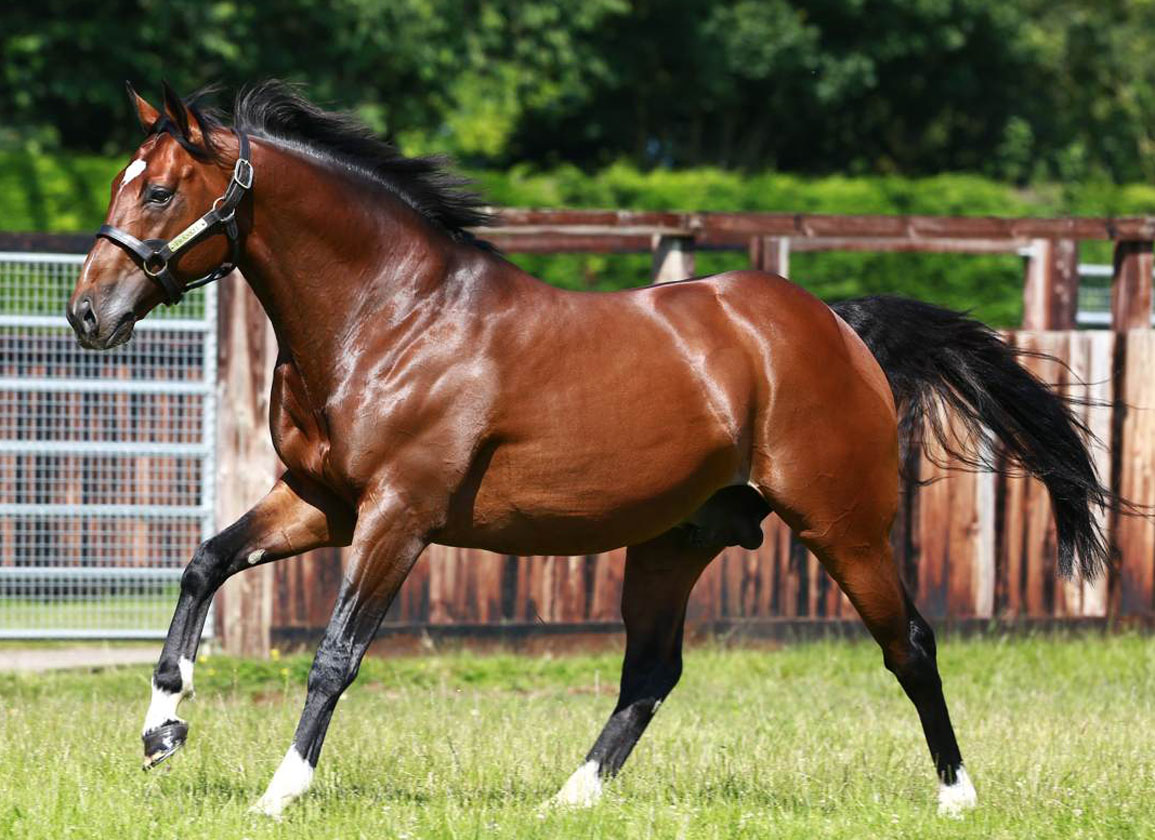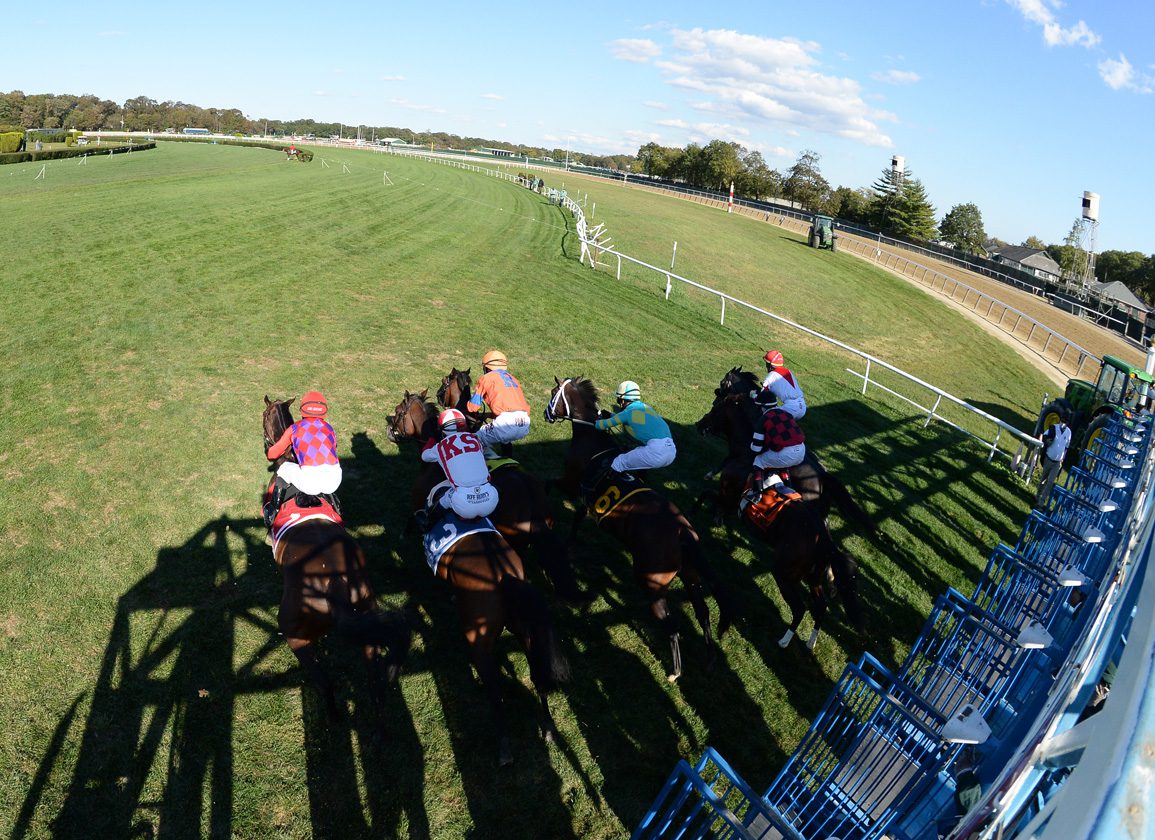By Chris McGrath
If this is seeing the future, then maybe it really will work. Among all these tiny, straggling groups negotiating the arid wastes of the dirt stakes program, we finally reach a true oasis in the GI Caesars Belmont Derby Inv. Here is a field that matches quality with quantity: a win for the owners, and a win for the bettors.
It is also, lest we forget, staged on a benign surface. As such, it is also a win for a whole community that needs to present its way of life to the wider world with absolute confidence. To a degree, you could almost say that the rapid maturity of the elite turf schedule devised by NYRA has become one way for the East Coast to complement the fantastic recent work, celebrated here a couple of weeks ago, on the dirt tracks of California.
In fact, you could even argue that it also dovetails with the progressive aspirations that have just inaugurated the HISA era. We know that some people will cling stubbornly to the wreckage, fiercely opposing federal interference with their constitutional right to treat the training of Thoroughbreds as a branch of pharmacology. But it's good to see so many industry stakeholders beginning to see the bigger picture; to recognize the trouble we've been inviting for ourselves, and to do something about it.
Click the play button below to listen to this week's edition of This Side Up.
And that's heartening, because right now we only have to look around to realize what a special product we have to share, if only we get our act together.
Look at last weekend, and look what's coming down the tracks, and shout it from the rooftops: we have a great game here. Provided we care for them as they deserve–and that includes the provision of scrupulously maintained dirt tracks, and a properly respected turf/synthetics division–we could have no more captivating advocate than these noble horses of ours.
So long as we have Saratoga, we still have a chance. Much as can again be said of Santa Anita, here's a sanctuary from the cares of life to win over even the most surly and snarling of sceptics. And the meet looks more exciting than ever after Olympiad (Speightstown) and Life Is Good (Into Mischief) threw down the gauntlet for the GI Whitney S.
The one pity is that they've dropped all talk of Flightline (Tapit) shipping back across for that race, too. Connections would evidently rather stay in his backyard, this time, even at the cost of a more abrupt step up in distance. We won't reprise our irritation that this huge talent should have become such an extreme example of the modern horseman's dread of actually racing a racehorse. But we all know that while life may indeed be good, it seldom contrives its very best possibilities. And experience sadly tells us that the idea of all three of these horses converging on the same race at the Breeders' Cup, in the same form as now, is a fanciful one.
What we do know is that right here, right now, we could put on one of the great races of our time. Nobody can be complacent about that happening in November, especially if their respective fortunes in the meantime happen to make the Dirt Mile more tempting than the Classic. Of course, we can't expect individual horsemen to base their gameplan on sheer altruism, when they need to redeem such heavy stakes already committed to the industry. But it does just seem a shame that when people start comparing horses to greats of the past, very often they don't see them measured even against the best of their contemporaries.
That became a familiar charge against Frankel (GB), albeit without eroding his status as one of the undisputed giants of the breed. The relentless style trademarked by his stock, in what is proving a no less brilliant stud career, has only heightened regret that he spurned both the Arc and the Breeders' Cup Classic.

Frankel / Juddmonte
But we have long become bleakly familiar with the schism nowadays dividing the industries either side of the pond. The only real trafficking between them today is about plugging the gaps in American grass racing. Frankel's two daughters in the GI Belmont Oaks show that this can be done by participation or trade: one, homebred by Godolphin, mounts a raid from Newmarket; the other was imported from that same town as a yearling. A third way is elaborated, however, by the presence in the colts' race of Stone Age (Ire), a White Birch-bred son of Galileo (Ire) shared by farm owner Peter Brant with partners from Coolmore. It's a massive tribute to the impresarios behind the Turf Triple that once again, as with last year's winner Bolshoi Ballet (Ire) (Galileo {Ire}), this race has been chosen as the next target for Ballydoyle's principal candidate in the Epsom Derby itself.
Yet while the import market for European horses-in-training and yearlings grows ever stronger, it somehow remains impossible even for highly eligible European stallions to achieve commercial traction in Kentucky. Flintshire (GB) (Dansili {GB}) was retired as the highest earner in the history of the Juddmonte program, and supplanted only by a member of his own family in Enable (GB) (Nathaniel {Ire}). Yet during his final spring in the Bluegrass–when his first crop had just turned three, one of its members flying into fifth of 19 in the G1 Prix du Jockey-Club–he was outrageously reduced to just eight mares.
American horsemen increasingly talk a good game about turf, but in practice most of them are no less culpable than Europeans about dirt blood. I know this is a drum I have long since banged to a pulp, but it's worth reflecting that all four of Stone Age's grandparents were bred in Kentucky: the icons Sadler's Wells and Urban Sea obviously stand behind Galileo, while his dam is by Danzig's son Anabaa out of an Alysheba mare. Stone Age's maternal line actually tapers to none other than La Troienne (Fr), but as eighth dam she is also the first not to have been conceived with Kentucky seed.
For sure, some horses are more versatile than others. Tiz The Bomb (Hit It A Bomb), for instance, was plainly born for chlorophyll. His connections were originally talking about a tilt at the Classics in Britain, only to be seduced to Churchill–understandably enough–when he found himself with those coveted starting points. Look closer, however, and you'll see that this horse, too, cautions against a prescriptive view of surfaces: his first two dams are by avowed dirt influences, in Tiznow and A.P. Indy, yet both ended up on turf.
His trainer also saddles recent recruit Classic Causeway (Giant's Causeway), famously one of three colts from the final crop of one of the last of the old school, a crossover force in both careers. As befits a son of the Iron Horse, he is being turned round just two weeks after his debut for the barn. That kind of thing makes Kenny McPeek a real outlier, in this day and age. And that's why, when I see the future, actually I don't see it working at all.
Not, that is, until breeders start renewing the kind of cross-pollination that previously opened such dynamic cycles in the evolution of the Thoroughbred, from Nasrullah going one way to all those sons of Northern Dancer going the other. In those days, we bred robust horses by the constant, mutual invigoration of the gene pool, either side of the water. If cynical, in-and-out, fast-buck trading in the freshman window is producing horses that can only run every couple of months, that's actually a welfare issue. So while we have found one welcome oasis, we must navigate with care if our final destination is not to prove a mirage.
Not a subscriber? Click here to sign up for the daily PDF or alerts.






